


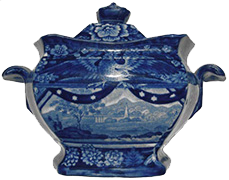
Database Discoveries #19 - Dark Blue Davenport, by Frank Davenport
The Davenport pottery was first documented in a 1974 book by Terry Lockett then later by Terry Lockett and Geoffrey Godden (1989). The authors tell much about the ninety-three years of operation and the wide range of ceramics and glass produced. The pottery became a limited company on 23rd April 1881, trading as Davenport’s Ltd but ceased manufacturing and declared bankruptcy in March six years later. The land, buildings, equipment, molds and copper plates were all sold and Davenport’s pattern books have not been seen since. Auction notices reproduced by Lockett and Godden mention eleven tons of copper plates for auction, representing more than 300 of the most salable patterns, of which Lockett and Godden name nearly 100. Whilst some of the pattern names have extant examples, many do not and without the pattern books it is difficult to match new finds to the original pattern names. Read this article.
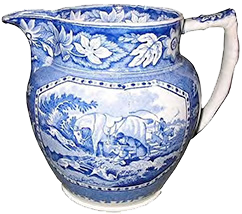 Database Discoveries #12 - Death and Bereavement on Transfer-Printing, by Colin Murray Parkes
Database Discoveries #12 - Death and Bereavement on Transfer-Printing, by Colin Murray Parkes
Death is an unpopular topic in our society and we may ask why anyone would want to include death-related imagery on items intended to decorate homes or to be used in the daily consumption of food and drink. A systematic trawl of the current TCC database reveals 104 patterns that are directly related to death. It would be tedious to show every one of them here and the examples that follow have been chosen to shed light on attitudes to death in the 19th century. A surprising number of these were found on children's wares as is shown in Judith Siddall's Database Discovery article 'Inappropriate Patterns for Children'. Hopefully the reasons for this 'inappropriate' behaviour will become apparent in this article. In the event the patterns may also teach us something about our own attitudes to death. To aid the flow of my argument I shall reserve technical details to the Endnotes. Read this article.
Rich with content for ceramic collectors, researchers, authors, curators, and historic archaeologists, the sites are sure to deliver value for their visitors. The exhibition’s curators continue to enhance them and, now, with site application upgrades, including a new magnification feature and upgraded content management capabilities, the TCC and its collaborators are pleased to relaunch these exhibits, all free to a worldwide audience.
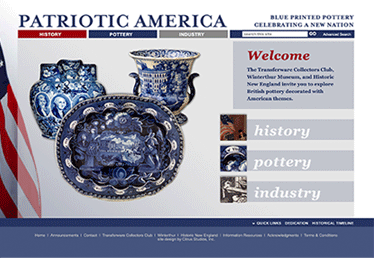
Branded Patriotic America, debuted in 2014 in collaboration with Historic New England, and the Winterthur Museum
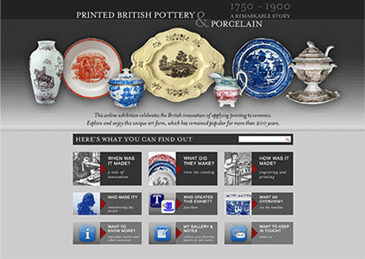
Launched in 2015 in partnership with the Northern Ceramic Society.
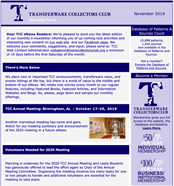 Not a member but want to receive email updates?
Not a member but want to receive email updates?